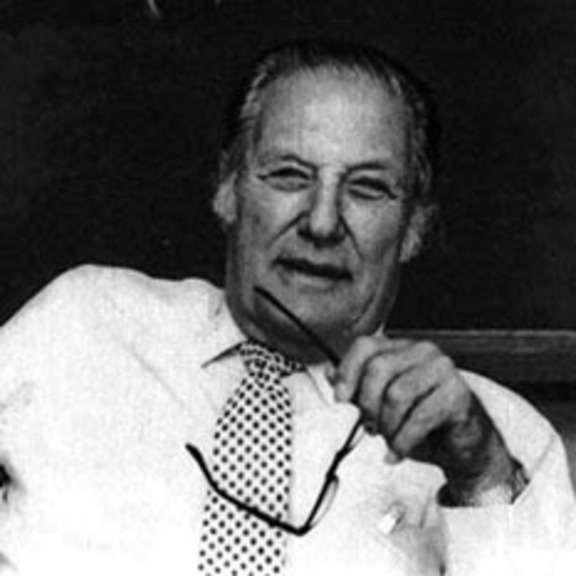
Bernard Oliver
Chief of the NASA SETI Program, NASA Ames Research Center
There are few individuals who have been as influential in the modern search for extraterrestrial intelligence as Bernard Oliver (1916–1995). The man whom everyone called "Barney" was of promethean stature, both literally and figuratively.
For four decades, Barney Oliver headed up research and development at the famed Hewlett-Packard Corporation. His interest in SETI first flowered when he made a trip to Green Bank, West Virginia in 1960 to watch Frank Drake conduct his pioneering radio search for signals from other stars. A year later, he was present at the famous Green Bank Conference - the first-ever meeting of scientists interested in the possibility of finding signs of intelligence in the Galaxy. The agenda for this conference later became formalized and famous as the Drake Equation.
Trained as an electrical engineer, Oliver was pivotal in the explosive growth of modern technology in the Silicon Valley. It was under his leadership that the first hand-held calculators were produced at Hewlett-Packard in the early 1970's. Later in his career he founded Biosys, a company specializing in biological controls for agriculture, and increasingly turned his attentions to SETI.
Upon completing his studies at Stanford (graduating at the age of 19) and the California Institute of Technology, where he received his doctorate in 1940, Oliver joined the Bell Telephone Laboratories in New York. He initially worked on schemes for improving the quality of then-new television systems, but - as happened to many - he shifted gears and turned his attentions to radar development as America became involved in the Second World War.
Barney was enthusiastic about his work at Bell Labs, and he initially rejected an invitation by fellow Stanford alumni William Hewlett and David Packard to join their growing electronics company in Palo Alto. But a few years later, in 1952, Oliver became Hewlett-Packard's Director of Research. In 1957, he was named Vice President for R&D, and joined HP's Board of Directors.
Barney held over fifty patents and was the architect of much of the ground-breaking technical development at Hewlett-Packard. He is probably best known for his work on the HP-35, the first hand-held calculator. The possibility of such a device occurred as Hewlett-Packard engineers were considering what product should follow the successful HP 9100A, a programmable desktop electronic calculator that was built of discrete components. In 1970 integrated circuits, which combined many such components in one package, were just becoming available.
"We realized that if we took the 9100 and converted it to integrated circuits, we could miniaturize it and carry it in our shirt pockets," said Oliver. Hewlett liked the idea, and gave Oliver's group a year to develop the product. Today, its successors are used by millions of people, and Oliver received the 1986 National Medal of Science for this work. He also served as a Vice President and later as President of the Institute of Electrical and Electronic Engineers (IEEE).
At the same time he was developing miniaturized calculators, Oliver co-directed a summer study at NASA's Ames Research Center with John Billingham (currently a Board member of the SETI Institute) on a scheme - called Project Cyclops - to use radio telescopes to search for evidence of advanced extraterrestrial civilizations. The report that resulted from this study became the "bible" and basis for much of modern SETI. An immediate consequence of this work was the launch of an ambitious NASA SETI program for which Oliver, upon his retirement from HP, served as a senior manager. In 1993, when Congressional action ended NASA involvement in SETI, Oliver was instrumental in finding philanthropic funding to continue part of the experiment under the auspices of the non-profit SETI Institute, where he was also a Board member. At the time of his death in 1995, he was a volunteer Senior Scientist for the Institute's Project Phoenix.
Barney's legacy is manifest in the enormous body of ideas and insights he leaves behind, as well as in the support that has allowed the SETI Institute to continue blazing the trail he opened. An endowed chair with his name is now the locus of SETI research at the Institute.


 Explore Worlds
Explore Worlds Find Life
Find Life Defend Earth
Defend Earth

